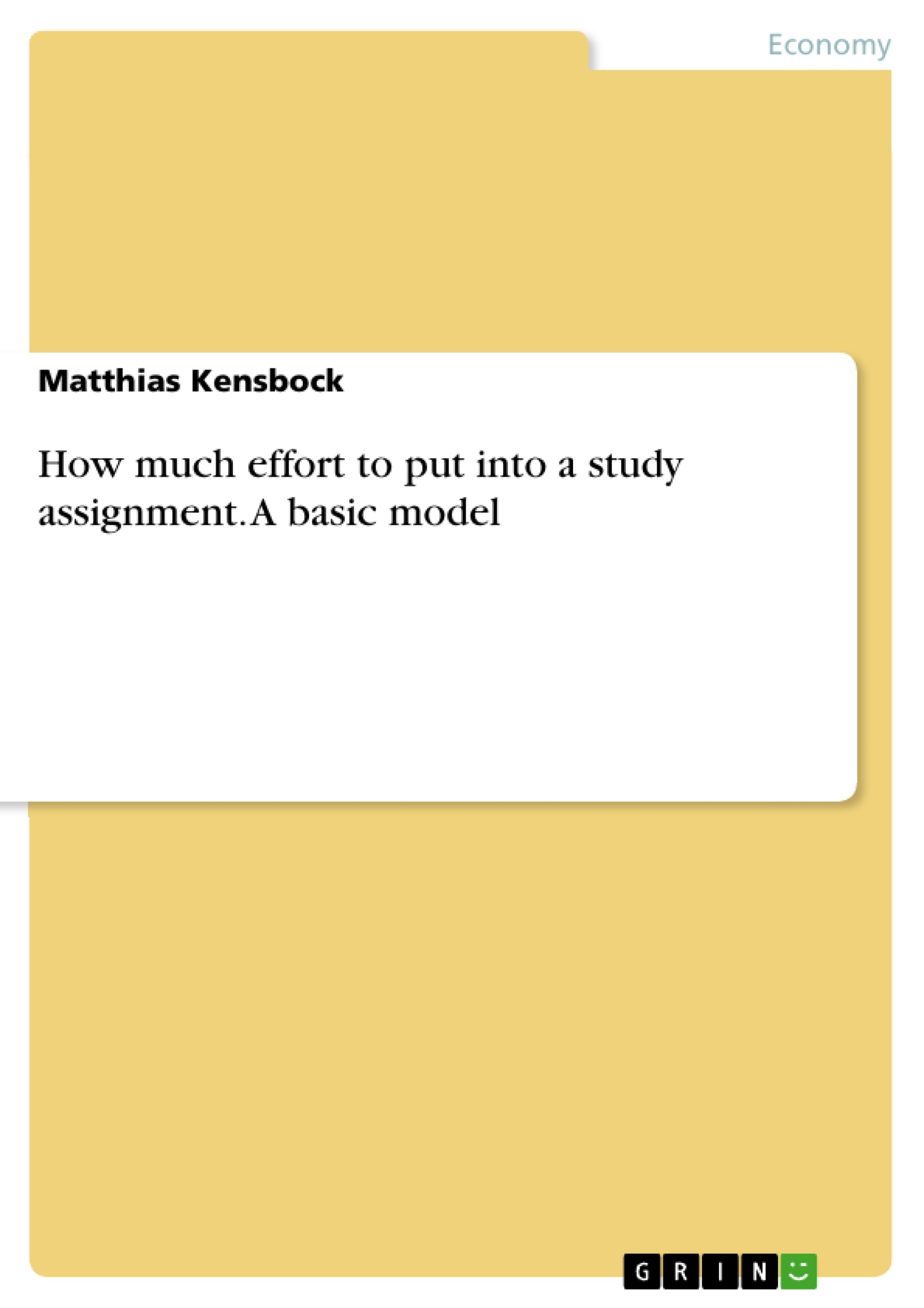In setting up an economic model one faces many dificulties: From a multitude of equilibria to non existing optimal solutions, the model parameters have to be assumed correctly to not only mirror behavior but lead to a solvable model. This paper outlines a basic model framework at the example an optimal effort level in writing papers for a masters course.
Every semester millions of students worldwide have to choose their courses, read compulsory literature, intensify their knowledge in their chosen field of studies and pass exams to advance further in their academic life. Students prepare themselves for their future jobs, improving skills in different areas, most of which will be applicable in specific business environments. They study to have a better perspective in the nowadays tight job market, to increase their expected future income, as they signal their quality as an employee by their degrees and grades. Where the potential future job however offers the paid wage as an incentive, for every hour or month worked,, your studies lack these direct monetary incentives. Being the better student will not yield a higher pay directly, you will not get money for every passed exam or every top grade you get in your studies.
Inhaltsverzeichnis (Table of Contents)
- Introduction
- The model
- First extension
- Second extension
- Policy implications
- Conclusion
- Further Extensions
Zielsetzung und Themenschwerpunkte (Objectives and Key Themes)
This paper explores the decision-making process students undergo when determining the amount of effort they allocate to study assignments. The primary objective is to develop a basic model that captures the key influencing factors, analyzes the students' optimal effort levels, and explores potential policy implications. This model investigates the impact of various factors on student behavior, including the relationship between effort and grades, the role of competition, and the existence of different student types.
- Optimal Effort Level
- Competition and Social Welfare
- Student Heterogeneity
- Policy Implications
- Diminishing Returns to Scale in Studying
Zusammenfassung der Kapitel (Chapter Summaries)
- Introduction: This chapter introduces the research problem, highlighting the lack of direct monetary incentives in studying and outlining the factors that influence students' effort allocation. The need for a model to explain this decision process is established.
- The model: This chapter presents the basic model, introducing the key variables such as effort (s), grade, future wage, discount rate, and cost of studying. The model assumes positive but diminishing returns to scale in studying and linear costs.
- First extension: This chapter expands the model by introducing a competition parameter among students. The chapter analyzes the impact of competition on social welfare and identifies potential problems arising from this competitive dynamic.
- Second extension: This chapter further extends the model by incorporating different student types, addressing the assumption of identical students. The chapter explores how these different student types make decisions regarding effort allocation and under what conditions they choose to study.
Schlüsselwörter (Keywords)
This paper focuses on the decision-making process of students regarding effort allocation in study assignments, employing a basic model to capture the influencing factors and analyze student behavior. Key themes include optimal effort levels, competition among students, heterogeneity in student types, policy implications, and the concept of diminishing returns to scale in studying. The model serves as a tool to understand the complex interplay of incentives and constraints that shape student behavior.
- Citar trabajo
- Matthias Kensbock (Autor), 2012, How much effort to put into a study assignment. A basic model, Múnich, GRIN Verlag, https://www.grin.com/document/285805



